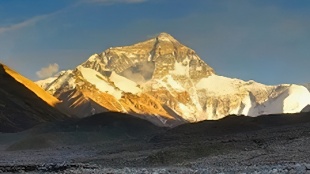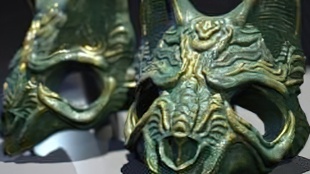您需要 登录 才可以下载或查看,没有账号?注册

x
本帖最后由 秋令6689 于 2022-5-17 15:37 编辑
Jordan Shoes – Prop Breakdown – Nicole Cardenas
乔丹鞋履 – 道具分解 – 妮可·卡德纳斯
Introduction
介绍
My name is Nicole Cardenas, but my friends call me Nicky. I’m currently doing an internship at Secret 6.
我的名字是妮可·卡德纳斯,但我的朋友叫我尼基。我目前正在Secret 6实习。
I’ve just finished my Master’s degree at Voxel school. I made these Nike air Jordan shoes for my final project. I still consider myself a student, and
I think one of the most beautiful things about 3d is that you never stop learning.
我刚刚在体素学校完成了我的硕士学位。我为我的最后一个项目制作了这双 Nike air Jordan 鞋。我仍然认为自己是一名学生,我认为3D最美丽的事情之一就是你永远不会停
止学习。
One of my most important goals is to improve my skills both in the artistic and the technical fields for video games.
我最重要的目标之一是提高我在视频游戏的艺术和技术领域的技能。
For this project, my objective was to create a Hero Asset that looked and felt like it could exist in the real world and I would like to share some tips
and advice on how the piece was created and what I learned in the process.
对于这个项目,我的目标是创建一个看起来和感觉它都可以存在于现实世界中的英雄资产,我想分享一些关于如何创建作品以及我在这个过程中学到的东西的提示和建议。
What software did you use?
The piece was modeled in 3DS Max, then I added details In Zbrush, retopology was done in 3DS Max, textured in Substance Painter, and rendered in Marmoset
使用了什么软件?
这件作品在3DS Max中建模,然后我在Zbrush中添加了细节,在3DS Max中完成了重新拓扑,在Substance Painter中进行了纹理处理,并在Marmoset Toolbag 4中进行了渲染。
References/Inspiration
参考/灵感
The reason why I chose to create these specific shoes, came unexpectedly. I saw a random news article that said that the sneakers Michael Jordan used in
1985 were for sale for thousands of dollars, that’s where my inspiration came from, this is the link to the news article.
我选择制作这些特定鞋子的原因,出乎意料。我看到一篇随机的新闻文章说,迈克尔·乔丹在1985年使用的运动鞋售价数千美元,这就是我的灵感来源,
The program that I use to collect all the references is PureRef. The references are one of the most important parts of the process. You have to ensure
that you have enough reference images of different angles of your prop. Having good reference images can greatly reduce the time guessing and allow you
to utilize your time more effectively.
我用来收集所有引用的程序是PureRef。参考文献是该过程中最重要的部分之一。你必须确保你有足够的不同角度的道具参考图像。拥有良好的参考图像可以大大减少猜测时间
,并让您更有效地利用时间。
Modelling
造型
In the modelling process, I started with the blockout. I focused my attention on having good shape and volume. The accurate proportion was a bit tricky
at first. Keeping the topology simple is very important, that way you can adjust things easily. I use references with front, left, and bottom views,
which helps me to have a better idea of the proportions.
Once I was happy with the shape, I started modelling the panels of the shoes, then adding the modifiers, shell and turbosmooth, finally exporting the
objects into Zbrush.
在建模过程中,我从封锁开始。我把注意力集中在拥有良好的形状和体积上。起初,准确的比例有点棘手。保持拓扑简单非常重要,这样您就可以轻松调整。我将引用与正面
,左侧和底部视图结合使用,这有助于我更好地了解比例。
一旦我对形状感到满意,我就开始对鞋子的面板进行建模,然后添加修饰符,外壳和涡轮平滑,最后将对象导出到Zbrush中。
High Poly Sculpting
高聚塑
First, I verified the general shapes and volumes and made any necessary corrections, then I smoothed the edges.
For the details, I added primary and secondary details on the ZBrush layers to have better control over them. I then focused on sculpting wrinkles with
my references in hand and added some wear/tear use.
首先,我验证了一般的形状和体积,并进行了任何必要的校正,然后我对边缘进行了平滑处理。
对于详细信息,我在 ZBrush 图层上添加了主要和次要详细信息,以便更好地控制它们。然后,我专注于用我的参考资料雕刻皱纹,并增加了一些磨损/撕裂的使用。
I use multiple brushes to get the primary and secondary details. Then I use an Alpha to get the extra details of the wrinkles of the leather.
For the stitches, I used the IMM stitches brush that comes in Zbrush.
我使用多个画笔来获取主要和次要详细信息。然后,我使用Alpha来获取皮革皱纹的额外细节。
对于针脚,我使用了Zbrush中的IMM针脚刷。
Once I am happy with the Asset, I think about retopologizing it. I decided to work on all the high polys at once and then move onto the low polys, rather
than 1 high poly, 1 low poly, etc. There’s no right or wrong way to approach this, you should do whatever works for you.
一旦我对资源感到满意,我就会考虑将其重新定位。我决定同时处理所有高多边形,然后转向低多边形,而不是1个高多边形,1个低多边形等。没有正确或错误的方法,你应
该做任何对你有用的事情。
Retopology
重新拓扑
This part of the process sometimes is a little tedious but is very important, because your assets go to a real-time engine, and it has to be optimized,
therefore this process has to be done by hand. For this, I use the Quad Draw tool from Maya, since it is well adapted for Wacom tablet use.
这个过程的这一部分有时有点乏味,但非常重要,因为你的资产会进入实时引擎,并且必须对其进行优化,因此这个过程必须手工完成。为此,我使用了Maya的Quad Draw工具
,因为它非常适合Wacom平板电脑使用。
UVs
展UV
For UV’s, I use Maya’s UV Editor. You have to keep in mind the geometry needs to fit in a 0-1 space. Make sure to know where to add seams, prioritize
the larger forms first, then work your way from there.
对于UV,我使用Maya的UV编辑器。您必须记住几何形状需要适合0-1空间。确保知道在哪里添加接缝,首先优先考虑较大的形状,然后从那里开始工作。
The soles are normally baked in order to optimize the geometry, but in this case, as it is a personal project, I decided to leave it to be able to work
on the texture in substance a little more.
为了优化几何形状,鞋底通常是烘烤的,但在这种情况下,由于这是一个个人项目,我决定让它能够更多地处理纹理。
Texturing
纹理
The entire prop was textured in substance painter. My first step was to observe the reference from my PureRef in the materials section, then I began to
quickly do research on what type of materials I am going to cover, if it is fabric, what type of fabric and fabric weave, also what type of material my
asset has and how will it age?
Once I do my research and organize my references. I set the painter to 2k, start to make base materials from scratch and then slowly build up the layers
to achieve realism.
The way how I organize textures is to divide them into 3 groups. Base, Texture, Dirt & wear.
Base: In this group, I create layers with a solid color and make the selections with color selection.
整个道具在实质上是画家的纹理。我的第一步是在材料部分观察我的PureRef的参考,然后我开始快速研究我要涵盖什么类型的材料,如果是织物,什么类型的织物和织物编织
,以及我的资产具有什么类型的材料以及它将如何老化?
一旦我做了我的研究并组织了我的参考文献。我将画家设置为2k,开始从头开始制作基础材料,然后慢慢构建图层以实现真实感。
我组织纹理的方式是将它们分成3组。底座,质地,污垢和磨损。
基础: 在此组中,我使用纯色创建图层,并使用颜色选择进行选择。
Texture: In this group, I add the texture layers of the material, for example, the leatherette, the leather, the fabric, and the corresponding weave of
each material.
Dirt and wear: In this group, I add everything that is external to the material, dirt, grime, dust, mud, wear, scratches. All these layers are normally
smart layers, but I never leave them as they come, I always edit or combine them.
质地: 在此组中,我添加了材料的纹理层,例如,人造革,皮革,织物以及每种材料的相应编织。
污垢和磨损:在这个组中,我添加了材料外部的所有东西,污垢,污垢,灰尘,泥土,磨损,划痕。所有这些图层通常都是智能图层,但我从不保留它们,我总是编辑或组合
它们。
Final Note
结语
Making something look great can be challenging, but remember, stay close to the references, don’t forget this is our passion, have fun when creating
your personal projects and be patient.
让一些东西看起来很棒可能具有挑战性,但请记住,要靠近参考文献,不要忘记这是我们的激情所在,在创建个人项目时要有乐趣,并保持耐心。
|

 显示全部 10
显示全部 10




 评分
评分






